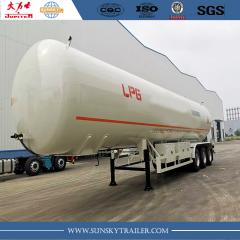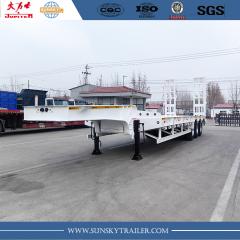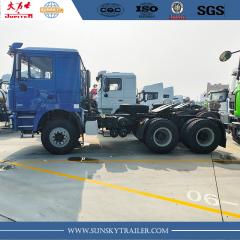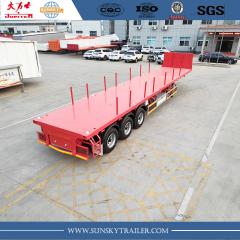-
 3 Axle Lpg Gas Tank Semi Trailer
3 Axle Lpg Gas Tank Semi Trailer
-
 Low Bed Trailer
Low Bed Trailer
-
 SHACMAN F3000 Tractor Truck
SHACMAN F3000 Tractor Truck
-
 Flatbed Pillar Trailer
Flatbed Pillar Trailer
SUNSKY VEHICLE, a manufacturer of flatbed semi-trailers, has found that the Flatbed Pillar Trailer i...
Do you ever find yourself needing to send anything that won't fit in a box trailer? Well, there are times when you simply must think outside the vehicle. If what you need to ship won't fit, or you're having trouble picking up and dropping off, a flatbed trailer could be the answer. Flatbed trailers are suitable for big or otherwise difficult-to-transport freight, and they can be a cost-effective and efficient way to transport a load. Because the cargo will not be contained, more care must be taken to ensure it is adequately covered and secured.

Reasons to use an open flatbed trailer
The champions of big shipments are open flatbeds. Automobiles, heavy machinery, building equipment, and other items are transported by them. You've almost certainly seen an open flatbed truck transporting a prefabricated home or a carnival ride. Although it is evident that an open flatbed is the best option for transporting these huge objects, numerous companies cite a range of other reasons for choosing them over box trailers. Loading cargo into a box trailer is similar to playing Tetris – you're trying to strategically slot parts of the shipment together to optimise space while becoming more agitated. The use of an open flatbed trailer virtually removes this risk.
The lack of a receiving dock is another major reason for using a flatbed trailer. When a box trailer cargo is prepared, the material is put into the trailer's back from an inside dock. When the truck gets to its destination, whether it's a warehouse or a business, it's backed into a raised dock door so that the cargo may be unloaded straight into the structure. If none of those places has a dock, cargo must be unloaded in another manner, which necessitates the use of an open flatbed truck., if the goods are too difficult to load and unload into a box trailer, an open flatbed trailer provides additional loading and unloading options.
When is it not a good idea to utilise an open flatbed trailer? A flatbed trailer isn't a good fit if your cargo is too fragile, or if you're delivering a lot of small, loose objects or lightweight stuff that could easily shift or fall off the truck while in route.
How to secure your cargo on a flatbed trailer
Material transportation on an open flatbed provides flexibility, but it also presents a challenge. Wind, rain, snow, sun, and even animal and human meddling can all endanger the valuable cargo while it is in route. The heavy-duty plastic that surrounds shrink -wrapped goods functions as a protective barrier, making it an ideal option for open flatbed shipping. Unwrapped cargo can be protected with vinyl, heavy-duty tarps; specialty tarps are available to cover and secure lumber, steel, and machinery; shaped tarps are available to fit snugly over large coils; and there are even smoke tarps that, when secured to the front of a cargo load, protect it from exhaust, dust, and road debris kicked up by the vehicle.
Using an open flatbed trailer necessitates the material being securely secured, which is even more vital than shielding cargo from the outdoors. It's critical to safeguard your goods from rolling or flying off the flatbed, not just for their own safety but also for the safety of others on the road. Nylon tension straps, high-strength bungee cords, or steel chains can be used to secure the material. Before hitting the road, professionals who load open flatbed trucks utilise particular procedures to tie down cargo and go through thorough safety point checks. Covering, fastening, and strapping your shipment properly helps to ensure that it arrives undamaged.



